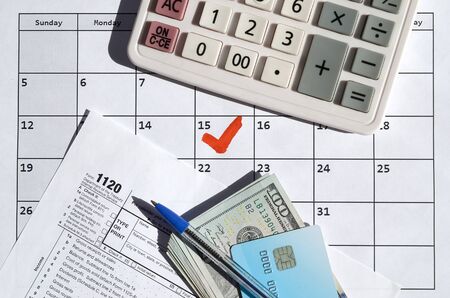Understanding Tax-Efficient Retirement Planning for Couples
When it comes to planning for retirement as a couple in the UK, getting your finances in order can feel a bit daunting at first. But here’s the good news: with a little know-how about tax efficiency, you can make your money work harder for both of you. In simple terms, tax-efficient retirement planning is all about structuring your savings and pension contributions so you pay as little tax as possible, leaving more in your pocket when you finally clock off for good.
Why does this matter? Well, as a couple, you have access to double the allowances and reliefs compared to someone planning solo. British tax rules offer specific benefits that reward smart saving and sharing between partners, whether you’re married or in a civil partnership. By understanding these perks—like splitting pension contributions or maximising each person’s annual allowance—you can build a stronger financial future together and even retire a bit earlier than you might have thought!
The key is knowing how the UK tax system treats pensions, personal allowances, and tax reliefs. With some straightforward strategies, couples can take full advantage of what’s on offer. Don’t worry if this all sounds new—over the next few sections, we’ll break down everything in plain English, so you can start making confident decisions about your retirement plans.
2. How Pension Contributions Work in the UK
If you’re just getting started with retirement planning as a couple, understanding how pension contributions work in the UK can feel a bit daunting. But don’t worry—let’s break it down into bite-sized pieces! In the UK, both individuals and couples can contribute to pensions and enjoy valuable tax reliefs along the way.
Pension Contribution Basics
When you pay into a pension (whether it’s a workplace pension or a personal one), your contributions are topped up by tax relief from HMRC. This means some of the money that would have gone to the taxman goes straight into your future instead. Most people will get basic-rate tax relief automatically, while higher-rate and additional-rate taxpayers may need to claim extra through their self-assessment tax return.
Annual Allowances
There’s a limit to how much you can pay into pensions each tax year before facing a tax charge—the annual allowance. For most people, this is £60,000 for the 2023/24 tax year, but it could be lower if your income is very high or you’ve already accessed your pension flexibly.
| Type of Allowance | 2023/24 Limit | Key Details |
|---|---|---|
| Annual Allowance | £60,000 | Total across all pensions; reduced for higher earners |
| Pension Carry Forward | Up to 3 previous years’ unused allowance | Can boost your current year’s limit if eligible |
| Personal Pension Contribution Limit | Your annual earnings (up to £60,000) | You can’t pay in more than you earn per year (unless using carry forward) |
Tax Reliefs for Individuals and Couples
The government offers tax relief on your pension contributions at your highest rate of income tax—20% for basic-rate taxpayers, 40% for higher-rate, and 45% for additional-rate. If you’re married or in a civil partnership, each partner gets their own allowances and tax reliefs. This opens up smart ways to plan together—like splitting pension contributions between you both—to make sure you’re both maximising these benefits.
Key Takeaways for Couples
– Each partner has their own annual allowance and tax relief
– Splitting contributions can help you use up both sets of allowances
– Planning together means you might save more in taxes and boost your retirement pot further
If you get these basics right, you’ll be well on your way to making your retirement planning as tax-efficient as possible!

3. The Benefits of Splitting Pension Contributions
When it comes to tax-efficient retirement planning for couples in the UK, splitting pension contributions between both partners can offer some real advantages. It’s not just about boosting your combined savings – it’s also a clever way to manage and potentially reduce your overall tax bill as a household.
One of the key benefits is that you can help balance out your tax liabilities. If one partner is earning significantly more than the other, they might be paying tax at a higher rate. By shifting some pension contributions to the lower-earning partner, you can make use of both partners’ personal allowances and basic-rate bands. This means less money lost to HMRC and more staying in your future pockets!
What’s more, each individual has an annual pension allowance – currently £60,000 or up to 100% of earnings (whichever is lower) for most people. By sharing contributions, you’re both making the most of these allowances rather than leaving one partner’s unused. It’s a bit like getting two bites at the cherry when it comes to growing your savings tax-free.
This approach also means both partners are building their own pension pots. That can be really handy later on, especially if you want flexibility around how and when you each access your retirement income. And don’t forget: keeping both pensions healthy could be important for things like inheritance planning and making sure you’ve got options down the road.
In short, splitting pension contributions isn’t just a smart move for minimising today’s tax bill – it sets you up for a more balanced, flexible and potentially generous retirement as a couple.
4. Maximising Personal Allowances and Annual Allowances
When it comes to tax-efficient retirement planning for couples in the UK, making the most of your personal income tax allowances and pension annual allowances can make a real difference to your nest egg. Here are some practical tips, including a few lesser-known strategies, to help you get started.
Understanding Your Allowances
Each individual in the UK has a personal income tax allowance (£12,570 for the 2024/25 tax year), which means you don’t pay income tax on earnings up to this amount. On top of that, there’s an annual allowance for pension contributions—currently up to £60,000 per person (subject to earnings limits and tapering for high earners). If you’re not using these fully as a couple, you could be missing out!
Tips for Couples: Making the Most of Allowances
- Split Pension Contributions: If one partner isn’t earning enough to use their full personal allowance or pension annual allowance, consider splitting contributions. The non-earning partner can receive contributions up to £3,600 gross per year (£2,880 net after basic rate tax relief), even if they have little or no income.
- Balance Your Incomes: Try to balance incomes between partners so both personal allowances are used. This is especially helpful if one person is close to higher-rate tax thresholds.
- Pension Carry Forward: Didn’t use all of your pension annual allowance in the last three years? You can carry forward unused amounts and contribute more this year—handy if you have extra savings or a work bonus.
- Gift Aid and Marriage Allowance: If one partner earns less than the personal allowance threshold, consider transferring part of their allowance (up to £1,260) to their spouse or civil partner through the Marriage Allowance scheme.
Quick Reference Table: Key Allowances and Strategies
| Allowance / Scheme | 2024/25 Amount | Tip for Couples |
|---|---|---|
| Personal Income Tax Allowance | £12,570 per person | Ensure both partners use full allowance by balancing incomes where possible |
| Pension Annual Allowance | Up to £60,000 per person* | Split or maximise contributions; use carry forward if eligible |
| Non-Earner Pension Contribution Limit | £3,600 gross per year | Make contributions for a non-earning partner to boost their pension pot |
| Marriage Allowance Transfer | £1,260 transfer available | If one partner earns below the threshold, transfer allowance to higher-earning partner |
*Subject to earnings and tapering rules for high earners.
Lesser-Known Strategies Worth Considering
- Pension Contributions from Savings: Even if one partner isn’t working, making pension contributions from joint savings gets you basic rate tax relief—a tidy 25% top-up from HMRC.
- Avoiding the High Income Child Benefit Charge: By increasing pension contributions, you may reduce your ‘adjusted net income’ below key thresholds and keep your Child Benefit intact.
- Savings Allowance & Dividend Allowance: Remember each partner also gets separate savings and dividend allowances—make sure investments are structured so both partners benefit.
The bottom line? Planning as a couple and making savvy use of all available allowances can help your pensions grow more efficiently—and keep more money in your pockets come retirement!
5. Practical Strategies and Common Pitfalls
When it comes to tax-efficient retirement planning for couples, a bit of teamwork can go a long way. Here are some practical strategies to help you set up your pension contributions smartly and avoid the common mistakes that often catch people out.
Setting Up Contributions Together
Start by having an open chat about your individual pensions and overall finances. It’s important to check whether both of you are making the most of your annual pension allowance—currently £60,000 each or your total earnings if lower. If one partner earns less or isn’t working, don’t forget they can still contribute up to £3,600 a year (including tax relief) into their pension. Consider splitting contributions so that both of you benefit from available allowances and tax reliefs.
Avoiding Common Mistakes
A frequent pitfall is simply forgetting about unused allowances—these can often be carried forward from the previous three tax years if you’ve got enough earnings. Also, beware of breaching the Lifetime Allowance (which has changed in recent years), as this could lead to unexpected tax charges. Another slip-up is assuming your workplace scheme covers all your needs; sometimes, additional personal pension contributions can make a big difference.
Ensuring Both Partners Benefit
The best results come when both partners actively use their personal allowances and basic rate tax bands. For example, if one person is a higher-rate taxpayer while the other pays basic rate or none at all, shifting some contributions can help reduce the household’s overall tax bill. Keep in mind that regular reviews are key—what works now may need tweaking as circumstances change.
In summary, good communication, regular checks on your pension status, and a willingness to adjust your approach will keep you on track. It’s all about making sure both partners enjoy maximum benefits from the UK’s generous pension tax reliefs while avoiding those easy-to-miss traps along the way!
6. Where to Get Further Guidance
If you and your partner are feeling a bit daunted by the world of tax-efficient retirement planning, don’t worry—you’re not alone! The good news is that there are plenty of places in the UK where couples can get expert, confidential advice on splitting pension contributions and making the most of allowances.
Speak to a Qualified Financial Adviser
For tailored guidance, it’s wise to consult an independent financial adviser (IFA) who specialises in pensions and retirement planning. IFAs can help you work out the best way to split pension contributions between you and your partner, as well as make sure you’re using all available tax allowances efficiently. Always check that your adviser is registered with the Financial Conduct Authority (FCA) for peace of mind.
Utilise Trusted UK Services
The UK has several reputable services offering free or impartial pension advice. MoneyHelper (formerly The Pensions Advisory Service) provides clear information about pensions, tax, and retirement options, including how couples can plan together. You can also contact Citizens Advice for general financial guidance and support on tax matters.
Check Government Resources
The government’s official website, GOV.UK, is packed with up-to-date information on state pensions, personal allowances, and tax rules. It’s a great place to double-check eligibility criteria or find step-by-step guides on things like pension credit for couples or claiming Marriage Allowance.
A Final Word: Don’t Be Afraid to Ask Questions
No question is too small when it comes to your future. Whether you pop into your local Citizens Advice office or set up a meeting with a financial adviser, getting professional help could make all the difference. Planning ahead now means more confidence and fewer worries later—so don’t hesitate to seek out the support you need as a couple!


